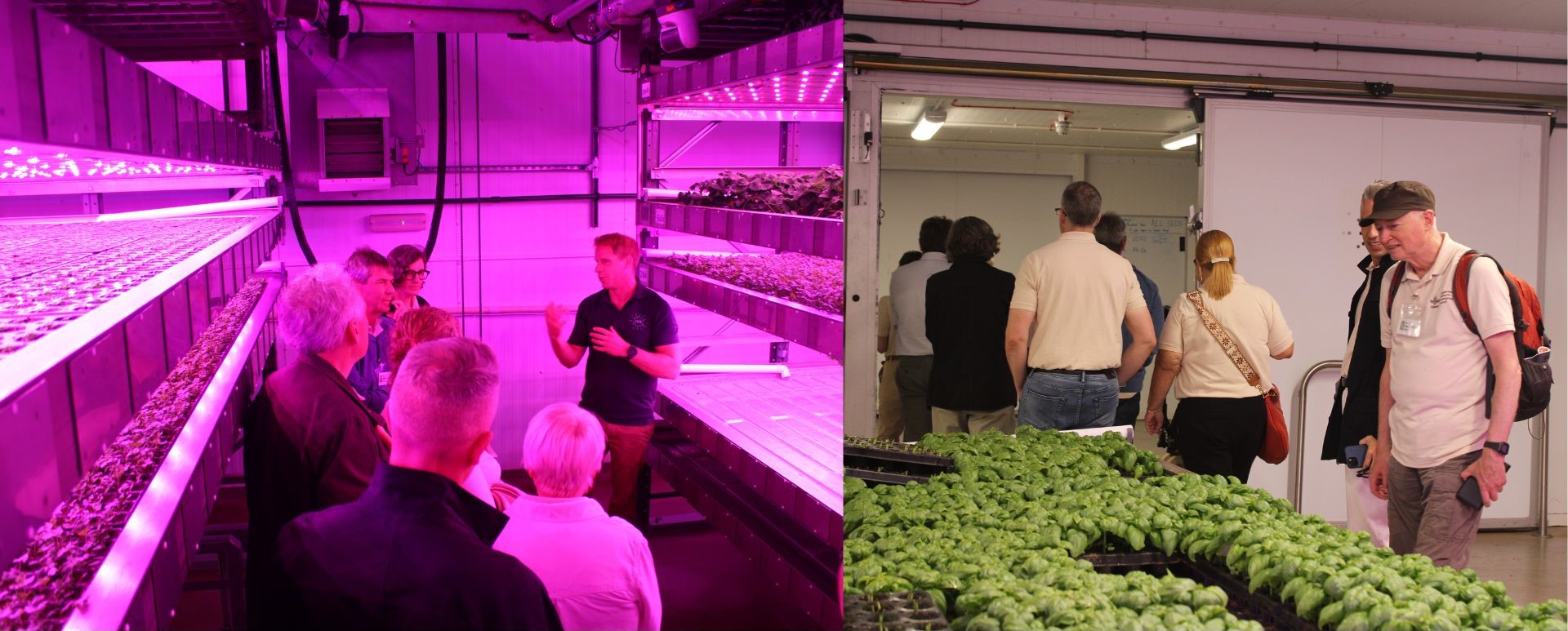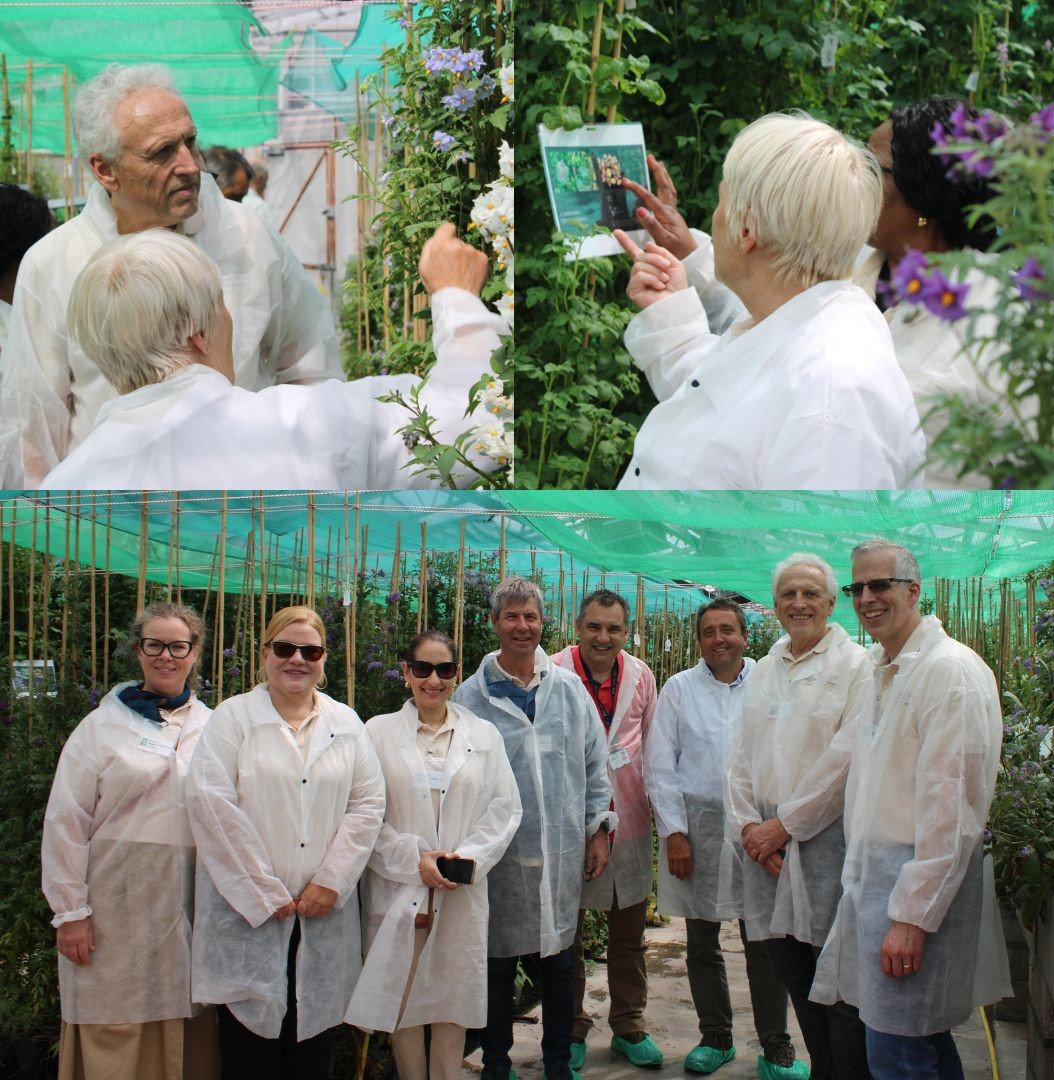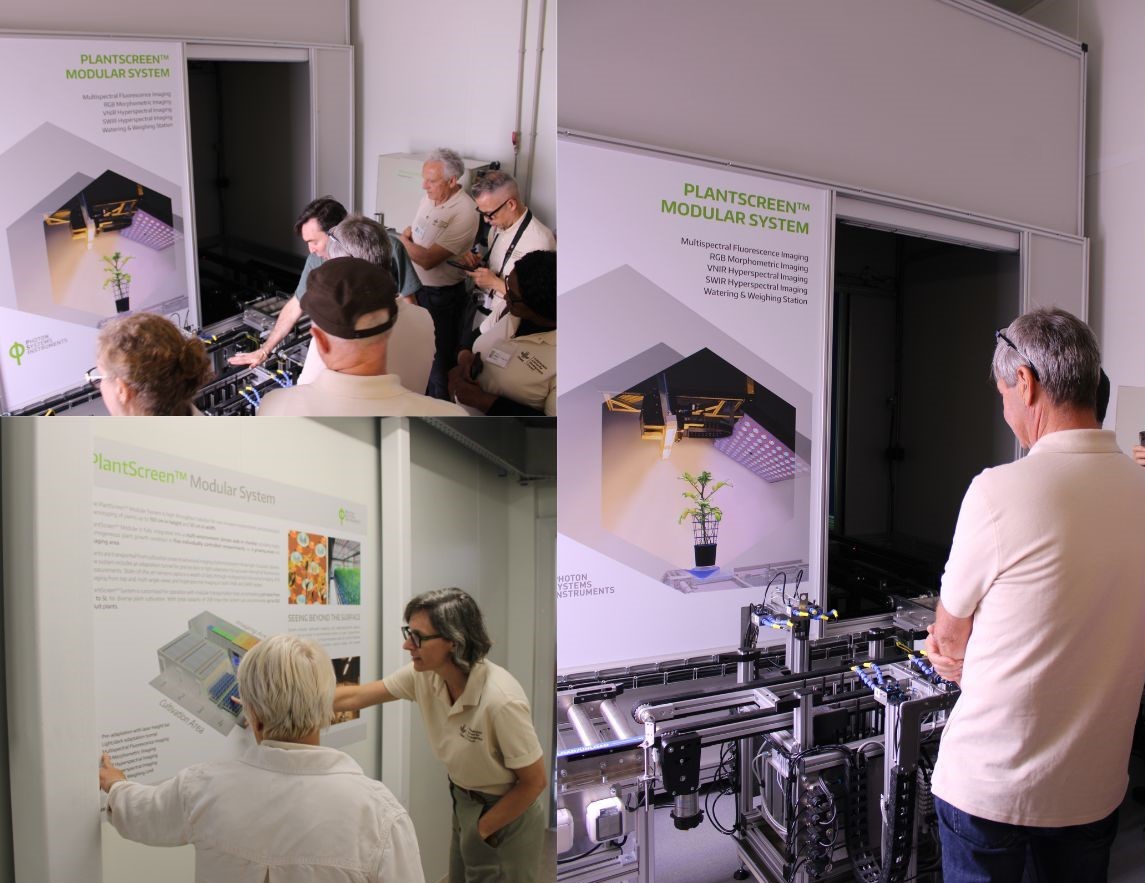The Independent Science for Development Council (ISDC) met in Edinburgh from 18–21 July for its first semiannual meeting of 2025. Over several packed days, we wrapped up the review of the CGIAR 2025–2030 Portfolio Inception Reports and officially welcomed our newest members Bruce Lankford and Ingrid Fromm.
Once the meetings were over, it was time to get out into the field. We headed north to Dundee to visit the James Hutton Institute (JHI), an institution many of us knew by name, because ISDC member Lesley Torrance is an Honorary Fellow. But there was also a chance to learn more about the man behind the name. James Hutton, an 18th-century Scottish polymath known for his work as a geologist, agriculturalist, naturalist, and physician, he is often credited as the “father of modern geology.” His work changed our understanding about the age of the earth, and geological or deep time, influenced Charles Darwin’s thinking on evolution.

Our hosts, John Jones (Senior Scientist) and Colin Campbell (Chief Executive of JHI), started the day by sharing JHI’s collaborations with CGIAR centers. John walked us through a joint project with the International Institute of Tropical Agriculture (IITA) to develop potato cyst nematode (PCN)–resistant potato lines for smallholder farmers in East Africa. PCN is a recent but fast-spreading problem in Kenya, now present in every potato-growing region and causing serious yield losses, as well as ecological pressures like deforestation. The goal of the project was to find new potato varieties that can stand up to the pest and protect farmers’ livelihoods and two new varieties are approved for release to small holder farmers.
Ali Karley, the head of the Ecological Sciences Dept, talked about their work on agroecology and approaches to sustainable future food and farming systems. She emphasized that they consider agroecology as more than regenerative farming, sustainable intensification or organic farming, it is a framework for a whole ‘Systems’ approach to provide food and nutrition security, addressing complex problems posed by biodiversity and climate crises. She provided examples of ongoing work on new crops, cropping practices and novel products as well as integrated studies on farm and how they work across sectors and disciplines to find solutions.
Next, we visited a company co-located on JHI site, Intelligent Growth Solutions (IGS), where Doug Elder introduced us to the Vertical Growth Tower, an indoor, fully controlled growing system that packs plants in at high densities. These towers deliver identical, high-quality crops year-round and are a powerful research tool because their consistency accelerates crop breeding and gene discovery.

Another highlight was the Commonwealth Potato Collection, about 1,500 accessions representing 80 wild and cultivated potato species, each with origins traced to South and Central America. With Brian Harrower as our guide, we stepped into the greenhouses - suited up in lab coats and shoe covers- and were lucky enough to catch the potato plants in full bloom.
Amanpreet Kaur, a research scientist, outlined a joint appointment between JHI and the International Potato Center (CIP), explaining CIP’s focus on potato biofortification, diploid hybrid breeding and the collaboration’s reciprocal transfer of material—examples include QuickGro and PCN-resistant Hutton lines.

The visit concluded with Paul Shaw describing how software development supports plant genetics, breeding, and genetic resource management, followed by a guided tour of the Phenotyping Centre with Rob Hancock, Deputy Director of the Advanced Plant Growth Centre. There, we saw the Plantscreen Modular System in action — an advanced, modular phenotyping platform that captures everything from high-resolution plant imaging to precise physiological measurements.

ISDC would like to extend its gratitude to the James Hutton Institute and all the staff who warmly welcomed us during our visit. The visit was insightful, engaging, and full of learning, and it was especially rewarding to see where our own Council member, Lesley Torrance, is based and contributing to such important work.


